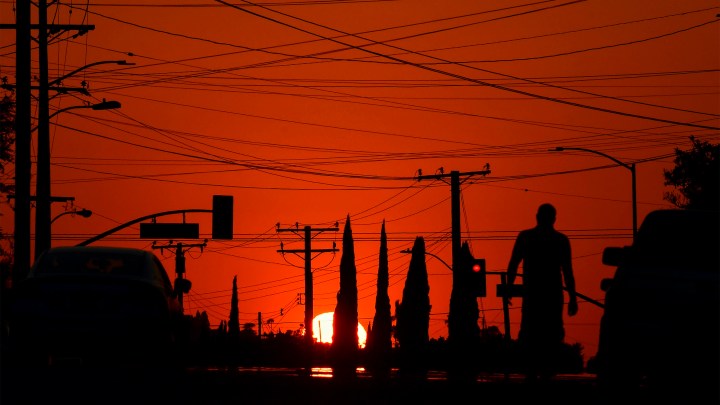
U.S. electrical grids are not prepared for climate change

New Yorkers, for the first time, received emergency alerts on their phones Wednesday asking them to limit their use of air conditioning and just use less electricity. This was as a heat wave gripped the region. And it was only in February that power grids failed spectacularly in Texas. Those situations raise the question: How prepared are American power grids for climate change?
As the weather gets more extreme, “in general I would say grids are not prepared for climate change,” said Brian Tarroja, a researcher in civil and environmental engineering at University of California, Irvine.
Higher temperatures mean higher electrical demand, said Michael Craig, assistant professor of energy systems at University of Michigan. “If you’re not planning for that increase in demand, which many systems are not right now, then you are not building enough capacity to meet that future demand.”
Utilities have traditionally based their future plans on the temperature extremes of the past. Those are no longer reliable, according to Arne Olson, senior partner with consulting firm Energy and Environmental Economics. “You know, 114 degrees in Portland was not on anybody’s radar,” he said.
Many utilities thought they had time and are now playing catch-up, Craig said.
“Utilities are in a bad position because things are happening very quickly that many people did not expect to happen so quickly,” he said.
Priority No. 1 is protecting the infrastructure we have and “weatherize our infrastructure against these kinds of extremes,” Tarroja said.
Power companies will need to build more sources of energy, and regulators will have to allow them to be built.
Tarroja said the more diverse and renewable the energy sources, the better. Having lots of little, interconnected sources of power and storage will help, too.
“When you have microgrids and energy storage and distrbuted solar and things like that, you have more levers you can pull to make sure that the electric load is met,” he said.
In some areas of the country, like in Texas, grids aren’t well connected to one another, meaning power can’t easily be moved to where it needs to go. Craig, at the University of Michigan, said utilities are going to adapt in different ways.
“Many of them will build storage and renewables, which is great, but you know, a lot might build more gas plants,” he said.
Overall, Tarroja said everyone knows what needs to be done, but not everyone is doing it.
There’s a lot happening in the world. Through it all, Marketplace is here for you.
You rely on Marketplace to break down the world’s events and tell you how it affects you in a fact-based, approachable way. We rely on your financial support to keep making that possible.
Your donation today powers the independent journalism that you rely on. For just $5/month, you can help sustain Marketplace so we can keep reporting on the things that matter to you.











